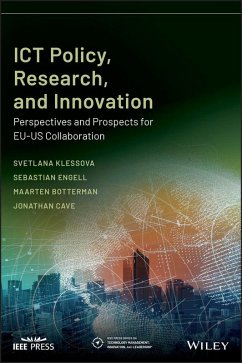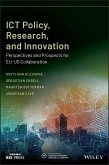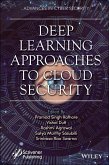A comprehensive discussion of the findings of the PICASSO initiative on ICT policy ICT Policy, Research, and Innovation: Perspectives and Prospects for EU-US Collaboration provides a clearly readable overview of selected information and communication technology (ICT) and policy topics. Rather than deluge the reader with technical details, the distinguished authors provide just enough technical background to make sense of the underlying policy discussions. The book covers policy, research, and innovation topics on technologies as wide-ranging as: * Internet of Things * Cyber physical systems * 5G * Big data ICT Policy, Research, and Innovation compares and contrasts the policy approaches taken by the EU and the US in a variety of areas. The potential for future cooperation is outlined as well. Later chapters provide policy perspectives about some major issues affecting EU/US development cooperation, while the book closes with a discussion of how the development of these new technologies is changing our conceptions of fundamental aspects of society.
Dieser Download kann aus rechtlichen Gründen nur mit Rechnungsadresse in A, B, BG, CY, CZ, D, DK, EW, E, FIN, F, GR, HR, H, IRL, I, LT, L, LR, M, NL, PL, P, R, S, SLO, SK ausgeliefert werden.









